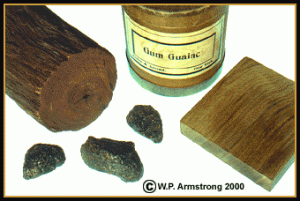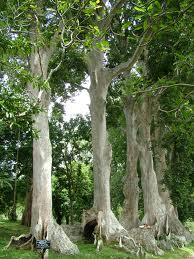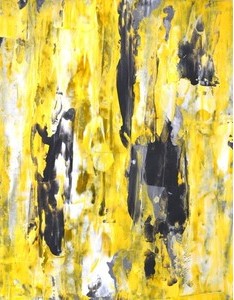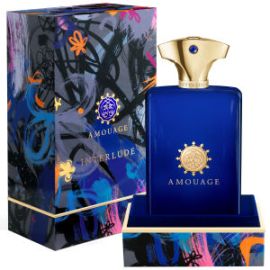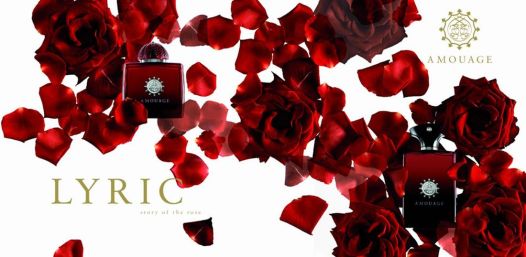The legends of the ancient Silk Road that wove its way from the Middle East to China, Puccini’s Turandot princess, the grandeur of the Forbidden City and the Dragon Empress’ Summer Palace, a veil of frankincense, and a dry desert wind that swirls spices around the lushness of a velvet red rose — those are a few of the things at the heart of Epic for Women from Amouage. Oh, and pickles as well. Yes, I said pickles….
Epic Woman (hereinafter just “Epic”) is an eau de parfum that was released in 2009. It was created by Daniel Maurel (who also did Lyric Woman for Amouage) under the direction of Christopher Chong. The inspiration was Puccini’s Turandot opera which is set in China, but which was based on an ancient tale involving a Persian princess and a deadly riddle. China had once banned the opera, but welcomed it with open arms in 1998 when it permitted a massive $15 million film production of the opera to be set in the 500-year old Forbidden City under the direction of the showman, Zhang Yimou (who later did the Beijing Olympics), with the opera conducted by the famed Zubin Mehta. I own the DVD, and the production is one of the most spectacular, extravagant, unbelievably opulent things you can imagine, so I sat up a little when I heard about the Turandot connection to Amouage’s Epic.
First in Fragrance has the company’s official PR description:
Legends of the Silk Road
A woman in the dusk. The desert wind tears at the delicate veil that covers her face. In the distance she sees a light that guides the way in her search for the fatal missing aria – from Arabia to China along the Silk Road…
The theme of this latest Amouage fragrance is the legendary aria from Puccini´s unfinished opera, Turandot. The legend says that one day the composer Puccini completed the opera and then buried the completed work somewhere in the sands along the Silk Road. The last act of the opera, it is said, was an incomparable aria, which could not possibly be sung by a human voice…
Epic’s notes, as listed on the Amouage‘s website and Luckyscent, include:
cumin, pink pepper, cinnamon, damascene rose, geranium, jasmine, tea, amber, musk, frankincense, oud, sandalwood, guaiac wood, patchouli, vanilla and orris.
Epic opens on my skin with a sour, sweet rose that instantly turns velvety, rich, and spiced. Alas, there is definitely the smell of pickles wafting about which is wholly disconcerting. I suspect it stems from the guaiac wood which, in my opinion, often has a very sour undertone, but the pink peppercorns here probably don’t help either. The latter soon arrives to join the festivities, along with a whisper of jasmine and a much stronger note of lemony tea. Little flecks of frankincense, patchouli, and vanilla dart about.
The whole thing is very elaborate, opulent, and infused with a complexity that really is very beautiful. The pickle aroma fades from its massive opening wallop within minutes, but it never fully leaves for the next six hours. Instead, it weaves its way throughout all the top notes, along with a certain sourness. It is always accompanied by the particular type of dryness and smoked leaves accord that is characteristic of guaiac. The guaiac is a major player in Epic’s development on my skin, and I quite like it at first, right down to that light pickle aroma. The various facets of the note cut through the incredibly rich, heady rose, thereby ensuring that its sweetness never turns into cloying, patchouli-infused syrup. Instead, thanks to the pink peppers, spices, and guaiac, the rose is fiery and spicy, while the growing note of frankincense adds a lovely blackness to its edges.
I don’t usually fall for marketing copy and rarely do I think their descriptions are accurate, but Luckyscent has a description for Epic Woman that really seems to hit the nail on the head for me, at least in terms of the perfume’s opening stage. They write:
Inspired by Puccini’s Turandot, Amouage’s Epic Woman is a masterful fusion of the smoldering opulence and sensuality of Arabia and the lyrical intensity of China. The luxurious feel of the fragrance brings to mind the precious essences carried along the ancient trading routes. One breath of Epic’s rich top notes of fiery cinnamon and languid cumin, and the image of Aladdin’s cave filled with gold, pearls, tea, silks, jade, spices and frankincense unfolds in front of our spellbound eyes. The sensuous, honeyed and dark blend of rose, tea and geranium in the heart of Epic evokes Turandot herself, the femme fatale beauty who lured love-stuck princes to their death. We would willingly die for this amazingly lush mix of rose, oud and frankincense. It is the inclusion of the latter that, to us, lends the time-honored union of the flower and oud such uniqueness; and the presence of the delicately smoky tea, ethereal jasmine and velvety-soft orris make the composition all the more special— a harmonious, melodious synthesis of the two enchanting points of the Orient.
I can see everything that they write. Their description really captures the feel of Epic in its opening hour, though I think things go downhill by the end. But for the opening hours, Epic is really…. well, epic. And it definitely conveys China to me, right down to the Turandot production in the Forbidden City.

One of the lesser palaces or pavilions in the Forbidden City. Photo: Duncan Toms. (Website link embedded within.)
I may be unfairly susceptible because I’ve been to China, spending about a month going from North to South, but in all seriousness, Epic’s opening somehow takes me right back to Beijing. Something about the combination of the incense, the guaiac, and the pink peppercorns really and truly smells like the dusty, faintly sour, old, wooden rooms in lesser palaces of the Forbidden City.

Lama Temple, Beijing. Source: George Oze, Flickr. (Website link for the Oze page embedded within photo.)
It also takes me back to the ancient monastery north of Beijing called the Lama or Yonghe Temple which I visited on Buddha’s birthday. There, the air was replete with smoking incense sticks carried by hundreds of worshippers, as bald, red-robed monks stood by smiling. The smell of the Lama Temple with its spicy, dry wood, its faintly sour dustiness, and the lingering traces of the heady floral offerings at the feet of the Buddha statues is really the smell of Epic. The same sort of spicy, peppered dustiness and smoke seemed to linger in the much more floral environs of the spectacular Summer Palace outside Beijing where the notorious (and, in my opinion, unfairly maligned) “Dragon Empress,” Tzu Hsi or Cixi, lived in splendour and lushness.
For the first hour, Epic Woman is a complex mélange of sour-sweet roses, dominated by an incredibly luxurious, velvety richness and infused with spice, fire, dust, dry woods, and incense. The pickle note is subtle and remains at the edges, but the smoky Lapsang Souchong aroma grows. You can almost see the Empress dressed in silks and curling her long, vermillion talons around a cup of tea infused with lemons.
The overall bouquet is increasingly flecked by an orris note that is blackened and smoky the way Ormonde Jayne‘s Orris Noir sought to effect without the same success. At the end of the first hour, spices join the mix. There is cinnamon that is lightly dusted on the roses, then a much stronger note of cumin. It never smells of body odor or curry, but merely feels dusty and dry, like the powder you’d find in a spice market in the Orient. Everything about Epic reeks of an Orientalist fantasy, in the best way possible.
The sillage is moderate, and the fragrance blooms about 2 inches above the skin. Little tendrils follow you in the air when you move, but Epic doesn’t feel as powerful or heavy as some other Amouage perfumes. To my surprise, it is lighter in weight than its heavy notes or the richness of the rose would lead you to think. Epic is strong, but it is far from opaque or dense in feel. For the next two hours, the only massive change to Epic is in terms of its sillage. It keeps dropping, and Epic feels thinner, airier, after 90 minutes. By the end of the second hour, the perfume hovers an inch above the skin. It is primarily a bold, strongly spiced rose with frankincense, black tea, pickles, the guaiac’s sour woodiness, patchouli sweetness, and iris. There is the first lingering whisper of powderiness, no doubt from the iris, but the dominant undertone to the rose is dusty spice, then incense.
At the end of the 3rd hour, Epic’s notes lose shape and clear distinction. The fragrance becomes a soft blur of rose dusted by amorphous spices, then infused with dry-sour guaiac and a light veil of frankincense, all atop a warm, vaguely ambered base with some patchouli sweetness and a hint of vanilla. It remains this way largely unchanged for the next few hours except for the prominence and strength of certain notes. The main one that varies is the guaiac wood. Sometimes, the pickle aroma returns and feels distinct, but at other times, there is only the wood’s other characteristic of burning leaves, extreme dryness, and general sourness. In the base, there is the faintest flicker of something soapy, but it’s quite muted.
Much more noticeable, however, is the patchouli. There is a phase where Epic turns much sweeter and more jammy, less dry, dusty and spiced as the fruited aspect of the patchouli impacts the top notes. It starts about 6.25 hours in and lasts roughly 90 minutes. During this time, the vanilla in the base becomes quite pronounced, and suddenly feels very custardy and rich. The overall effect of both things is quite disconcerting, especially next to the pickle. Epic feels like a jarring set of contradictions from powdered orris, dry-sour wood, jammy patchouli, black smoke, a touch of pickles, and rich vanilla custard. Even if those are the undertones and not the dominant bouquet, it’s really not my thing. Honestly, I blame a lot of it on the guaiac wood. A small touch of sourness is one thing, even if it borders on pickles. But pickles mixed with the arid, singed feel of burnt leaves and sourness, combined with the richness of the vanilla custard and the jamminess of purple fruit-chouli… it’s too much for my personal tastes.
The weird phase thankfully ends by the start of the 8th hour, but Epic simply turns into a desiccated rose. The fragrance somehow feels more dusty and smoky than before. Not even the lingering, now thin, layer of dried vanilla in the base can fix it. In fact, the rose takes on a faintly ashy facet, along with some powderiness as if from makeup powder. The guaiac loses its pickled touches, but now, the dry wood has taken on a staleness to join its sourness undertones. It’s hard to explain, but I’m not thrilled by any of it. I’m even less enthused when Epic devolves into a simple, rather nebulous blur of dry, dusty, woody roses with a soapy undertone and touches of smokiness. Soapiness is really the final straw for me, no matter how minor it might be.
There, it remains until its very end when Epic dies away as a smear of woody dryness. All in all, Epic lasted just short of 13.5 hours, with initially moderate sillage that soon turned to soft. As a whole, it lingered just an inch above the skin for the first 6 hours, but was always concentrated when smelled up close. It only turned into a skin scent at the start of the 7th hour. I really enjoyed the first few hours, but the rest of it was much more of a struggle. In all fairness, however, I’m not particularly passionate about rose scents in general.
I felt rather crazy for smelling pickes (of all things!) in an Amouage fragrance, but, apparently, there are a few of us loons out there. I was hugely relieved to see two comments on Luckyscent saying the same thing:
- Its not terrible, it just smells a bit like pickles.
- ….it smels a little bit like pickles to me…. yay! [That was a sarcastic “yay,” as the person gave it 2 stars out of 5]
On Fragrantica, the reviews are all over the place, to the point that I’m not sure I could find quotes representing a consensus. For some people, Epic is a primarily vanilla-centered fragrance, while for others, it is nothing more than a spice cabinet focusing on dry caraway (cumin) with frankincense. One person mentioned pickles, yet again. (I’m so glad I’m not crazy!) Three or four people found Epic to have a medicinal start, while others compare Epic to its sister, Lyric. There doesn’t seem to be any agreement on that comparison either. Some find Epic to be spicier, perhaps the spiciest of all Amouage fragrances, while one person calls it icier with a powdery hauteur (that she loves). For a few Fragrantica commentators, Epic is floral soap, while others talk of a powdery element. Almost everyone thinks Epic has monumental longevity, while a few disagree and said it only lasted a few hours on their skin.
Despite these differences, however, the majority of people seems to really love Epic Woman. I think the issue is going to come down to how much spice and dryness you can handle. One or two people mentioned Andy Tauer‘s L’Air du Desert Marocain; I can see similarities in terms of the fragrance’s dryness and spiciness, but only vaguely. Very vaguely, as I think Epic is significantly more floral in nature, more lush, and rich. On my skin, the caraway or cumin that others mention was not as dispositive as the guaiac, and the spices were fully enfolded into the velvety rose, but it’s all going to depend on skin chemistry.
I think a greater point of comparison might be to Amouage’s Lyric Woman. Now, granted, on my skin, Lyric was primarily about the ylang-ylang and not quite so much about the roses, but it’s generally considered a spicy rose fragrance. And it is certainly what came to my mind when wearing Epic. So, how do the two compare? Angela at Now Smell This reviewed Epic Woman, and offered her thoughts on the two rose sisters:
Epic is warm, thick, and fuzzy with smooth edges. Rose and sweet sandalwood balance Epic’s sour oud and frankincense, and a dusting of peppery spices makes sure the fragrance never strays into olfactory tranquilizer territory. Epic starts not with perfume’s traditional tickle of citrus, but with pepper and geranium, before settling into a rose-inflected blend of frankincense and rose, tinged with oud. Over time, the sandalwood steps forward. I can’t pick out the cumin at all.
If this sounds like a description of Lyric Woman, the two fragrances do share common ground. To me, though, Lyric feels brighter, colder, and more distinct than Epic. Epic, on the other hand, is so silkily blended that when smelling it I visualize all its components woven together into a fragrant blanket. Lyric focuses more on rose and incense, while Epic favors spice and sandalwood. Lyric feels like a stained glass window, while Epic feels like a chunky but formfitting sweater knit from Italian merino wool the color of dark honey. Lyric broods, and Epic comforts.
Perfume-Smellin’ Things also found similarities, but thought Epic was more lush and grandiose. For those who are cumin-phobes, I would like to emphasize that she too did not find cumin to be a major part of the scent. Her review reads, in part, as follows:
Speaking of Lyric, to me, Epic picks up its ripe, honeyed rose theme and carries it on, embellishing the star note further, and sort of giving the idea its logical closure by making the composition darker and even more extravagantly lush. No, the two are not the same fragrances, but of all Amouage siblings these are probably the closest in spirit.
The embellishments in question are oud and frankincense. The funny thing is that, at the very first sniff from a vial or a on scent strip, the scent is undeniably an oud-rose blend. As soon as it is applied to the skin, however, incense takes center stage, and I like that. There are plenty rose-ouds and not that many rose-incenses. The nocturnal, resinous frankincense note delights me with its presence for a good long while, sort of covering the rose like a black curtain. Eventually the curtain is lifted and there is the flower, sweet, over-ripe, spicy with cinnamon and geranium, brewed with black tea and vanilla into a seductive potion. It is a delicious, edible, sensual and yet appropriately regal rose.
If you are looking for more oud, you will find more in the base, along with some dirt from patchouli and some more nectareousness from amber and sandalwood. Those afraid of the sweetness, note that it is well balanced by the drier, stark notes of frankincense, gaiac and oud. Cuminophobiacs, to you I can only say that there was no cumin on my skin (not that I would have minded some). All fans of the Big Perfumes in general and Amouage’s decadent oeuvre in particular, Epic is a must-sniff and, as far as I am concerned, a must-have.
I agree with her that Epic Woman is a must sniff for those who love extremely big, bold, spicy orientals. Same thing if you love roses, though I think there are enough spices, dry woodiness and incense to ensure that Epic is not merely about the flowers. Those elements also render Epic Woman quite unisex, in my opinion.
The perfume is not cheap by any means, but I have found a whole slew of discounted prices from retailers around the world. Epic Woman retails for $265, €215 or £175 for the smallest size (50 ml), but there is one reputable discount site that sells a large 100 ml bottle for as low as $170, if you’re willing to accept the lack of a box. (See, the Details section at the very end.) For those who love their boxes, the perfume is also available for a little bit more at $199, which is still $100 below the $310 retail cost for the 100 ml size. It’s a great deal, either way.
So, don’t be shy about testing Epic Woman if the notes intrigue you and if you love very spicy, bold, rich scents . Hopefully, on your skin, it won’t turn up with a heavy pickle aroma and the guaiac will be more pleasant in its other manifestations as well. For me personally, Epic Woman is too much of a struggle when taken as a whole and I’m simply not that much of a rose fiend to ignore it. That said, I have to repeat that I truly enjoyed its opening hours. Epic is lush, grandiose, and thoroughly suited to Princess Turandot.





